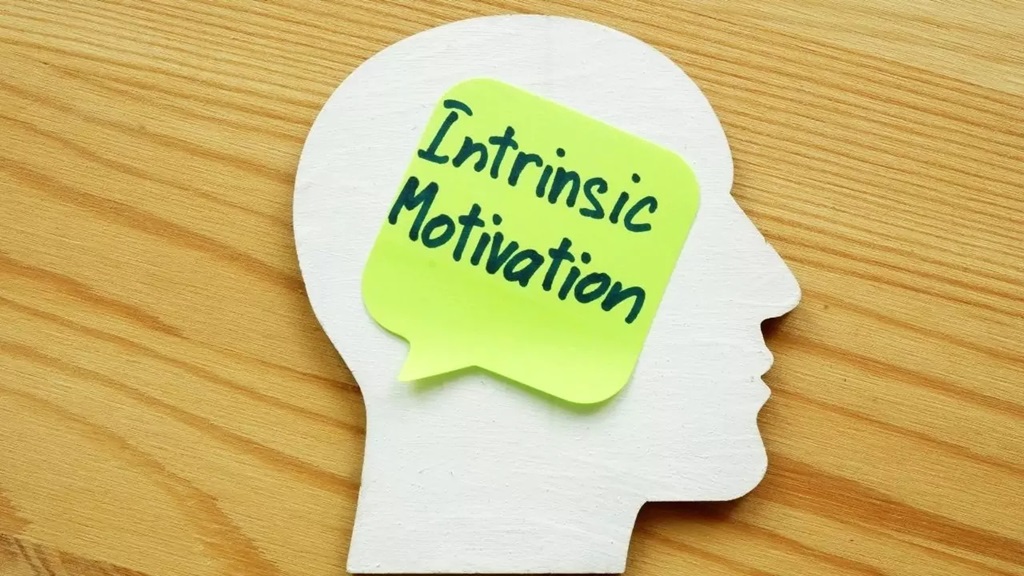
24 Dec Which Scenario is an Example of Intrinsic Motivation?
Intrinsic motivation is a psychological concept that refers to behavior that is driven by internal rewards rather than external ones. When a person is intrinsically motivated, they engage in an activity because they find it inherently enjoyable, interesting, or personally fulfilling, rather than doing it for some kind of external reward like money or fame.
This type of motivation is often seen as more powerful and long-lasting than extrinsic motivation, as it is driven by a person’s own inner passions and interests rather than external pressure or incentives. Identifying real-world examples of intrinsic motivation can help illustrate this concept and show which scenario is an example of intrinsic motivation.
Defining Intrinsic Motivation
Intrinsic motivation comes from within rather than being driven by outside factors. There are three key requirements for intrinsic motivation:
- Autonomy – The person feels free to choose their actions rather than being controlled or pressured to behave a certain way. They have agency over their behavior.
- Mastery – The person perceives their actions as an opportunity to improve their skills and abilities. There is a challenge to work towards.
- Purpose – The person finds meaning and authentic self-expression through their actions. Their behavior aligns with their inner values and goals.
When these three requirements are met, motivation arises organically from feelings of interest, enjoyment, and passion rather than being dependent on external prods, pressures, or incentives.
Let’s explore some real-world examples that demonstrate intrinsic motivation in action across different contexts.
Examples of Intrinsic Motivation
Learning and Academics
Education provides many illustrative examples of intrinsic motivation. Students who are intrinsically motivated to learn:
- Choose challenging, engaging course material out of curiosity and interest rather than selecting easy classes just to obtain a degree.
- Ask questions and participate in discussions because they genuinely want to understand the subject, not just to get a good grade.
- Get absorbed in research projects or academic readings due to fascination with the topic.
- Pursue knowledge in a self-directed way through activities like visiting museums, watching documentaries, or reading on their own initiative.
In these cases, the desire to satisfy one’s inquisitiveness and grow one’s knowledge drives behavior rather than external achievement pressures or incentives.
Hobbies and Leisure Pursuits

Hobbies epitomize intrinsic motivation because people take them up primarily for reasons of enjoyment, self-expression, and challenge. For example:
- Artists create works to convey inner visions and emotions, capture beauty, and master creative techniques.
- Runners train to experience personal accomplishments, improve health and fitness, and feel exhilaration.
- Gardeners plant and nurture flora based on their appreciation of nature’s splendor and desire to participate in the growing process.
- Musicians learn instruments to unlock self-expression through song and attain new musical heights.
In all these hobbies, positive internal sensations of flow, growth, joy and purpose motivate ongoing participation more than external factors like praise, payment or prestige.
Gaming and Sports
Gaming and sports are also fueled significantly by intrinsic motivations:
- Video gamers dedicate long hours to mastering games’ challenging levels and complex strategies for reasons of personal achievement and enjoyment rather than earning high scores for their reputation.
- Athletes train rigorously to surpass physical barriers, accomplish new feats, and experience the rush of game-time victory. Beating records and winning titles may be nice byproducts but are rarely the main driving factor.
- Runners enter marathons to attain self-transcendence and prove inner resilience more so than besting the competition.
- Rock climbers scale steep heights for the self-satisfaction of overcoming daunting natural obstacles through determination and growth in technical skill.
In these examples, internal motivations like enjoyment, mastery, creativity, self-expression and spiritual fulfillment take priority over external prods.
Volunteering and Altruistic Acts
Volunteering and altruistic behaviors also demonstrate intrinsic motivation in action. Those who are intrinsically motivated to volunteer or help others do so primarily due to internal purpose and meaning rather than social pressures or prestige. For example:
- Animal rescuers devote large amounts of time and energy to saving pets from peril to satisfy their inner calling to protect all living beings.
- Volunteers at food banks and homeless shelters gain internal fulfillment from easing the suffering of those in need.
- Citizens who stop to give directions to lost tourists experience a boost in mood from random acts of kindness.
- Whistleblowers speak out to expose injustice or wrongdoing purely based on personal convictions regarding ethics and truth rather than personal gain.
In these cases, inner purpose and moral compass direct behavior more than external factors like payment or praise.
Why Intrinsic Motivation Matters

Understanding intrinsic motivation has significant implications across many fields including education, management, sports psychology and video game design.
Research shows that intrinsic motivation:
- Enhances performance, persistence and creativity since the drive comes from within.
- Leads to greater overall well-being and life satisfaction.
- Promotes more engagement and higher quality learning in academic settings.
On the flip side, excessive external motivation tactics like rewards or micromanagement can undermine intrinsic motivation. For sustainable, high-quality outcomes, the goal is to structure environments to maximizes one’s inner drive to learn, achieve and help others. Real-world applications range from structuring classrooms to foster curiosity to designing volunteer programs that emphasize meaning over perks to developing video games full of escalating challenges that tap into players’ sense of agency.
The next time you consider why you or those around you choose to do what you do, consider where the motivation arises from – intrinsic or extrinsic. What brings you genuine inner fulfillment and purpose? How might we design systems and spaces that tap into intrinsic motivation to uplift society? Much depends on how deeply we understand what motivates us.
Conclusion
Intrinsic motivation is a powerful, pervasive force arising from within rather than requiring external pressures or enticements. Understanding where intrinsic motivation comes from and how it manifests across contexts can provide keen insights for designing effective learning systems, work environments, sports training programs and more. The next time you consider which scenario is an example of intrinsic motivation, look inside rather than outside to understand what is truly driving behavior. Therein lies the key to unlocking people’s greatest fulfillment and potential – both as individuals and collectively as a society.
Frequently Asked Questions
Q: How is intrinsic motivation different from extrinsic motivation?
A: Extrinsic motivation comes from outside factors like money, acclaim, or pressure rather than arising organically from within. Intrinsically motivated behaviors are done for their inherent rewards like enjoyment, self-expression, or challenge rather than being driven by external prods.
Q: Doesn’t offering rewards increase motivation?
A: Research shows that extrinsic rewards and pressures can actually undermine intrinsic motivation. The risk is that people start viewing tasks as a chore needed to earn the reward rather than doing them for reasons of authentic fulfillment. Better to structure environments to maximize intrinsic motivation.
Q: Can you intrinsically motivate someone else?
A: Not directly. But we can design systems, policies, and spaces that allow each person’s intrinsic motivations to flourish by supporting their needs for autonomy, mastery and purpose. The drive ultimately comes from within each individual, but environments shape how it gets expressed.
Q: Are intrinsic and extrinsic motivation mutually exclusive?
A: Not necessarily – many activities have elements of both. But in general, the more intrinsic motivation is at play, the greater engagement, effort, creativity, and persistence tend to be. Maximizing intrinsic motivation should be the priority whenever possible.
Q: Does intrinsic motivation lead to the best performance?
A: In many domains like learning, sports, gaming, creativity and altruism, research confirms that intrinsic drives produce optimal motivation and performance compared to external controls and incentives. By tapping genuine inner passion and purpose, intrinsic motivation fuels people’s ultimate capabilities and potential.



Sorry, the comment form is closed at this time.